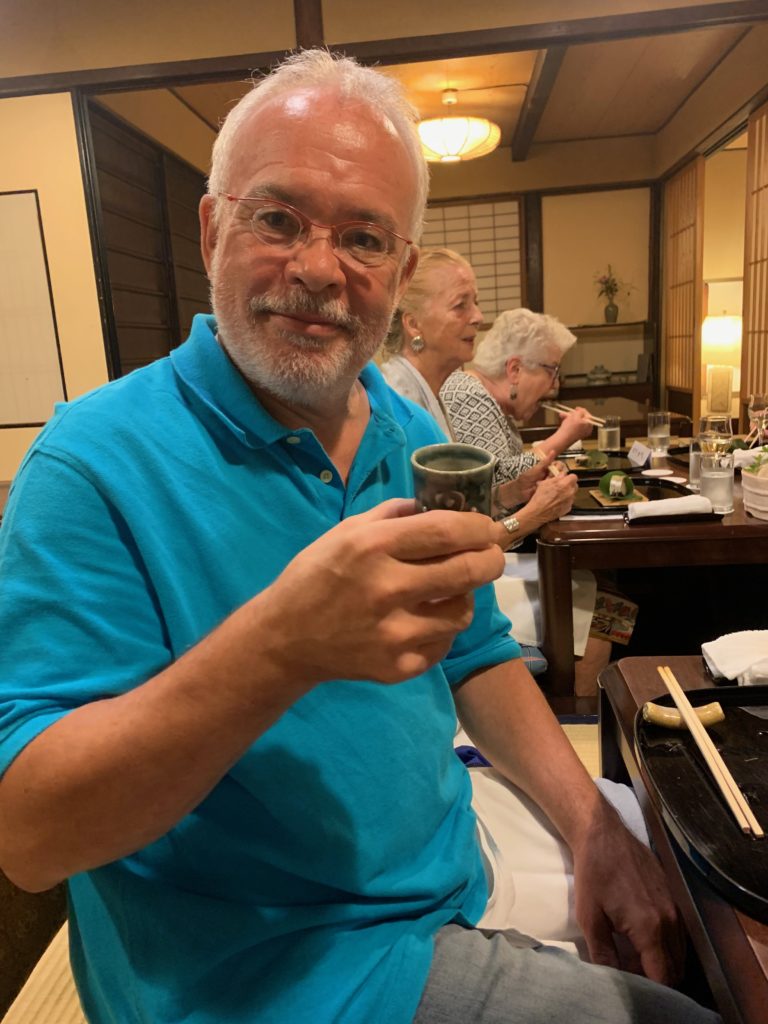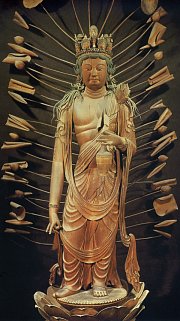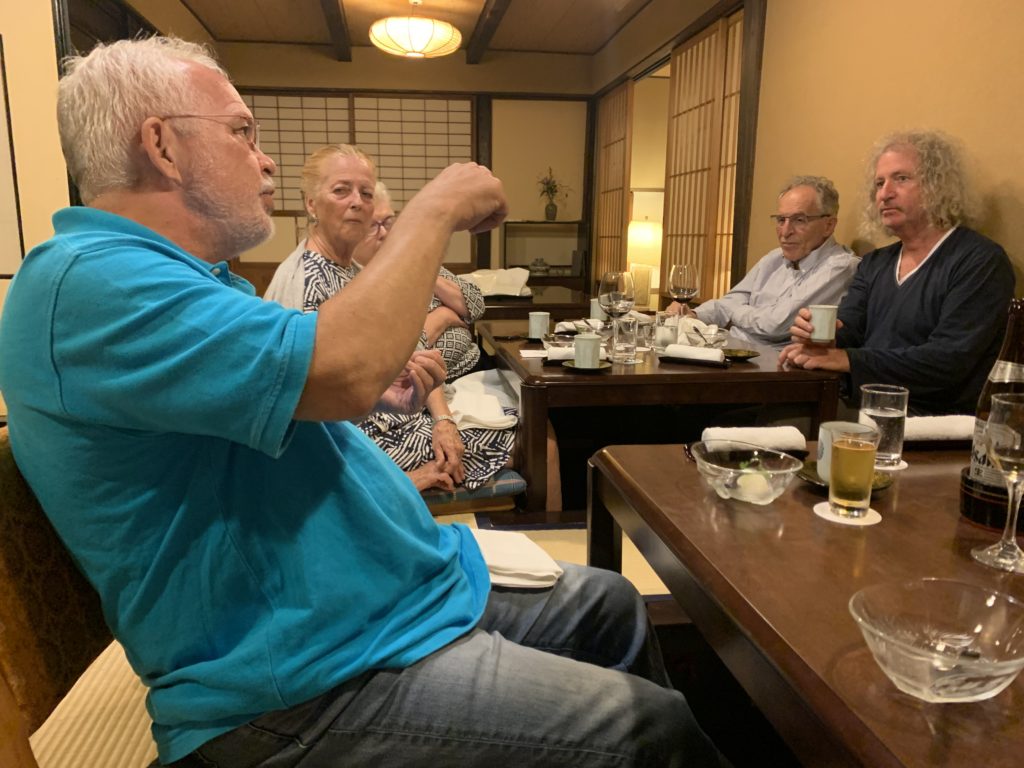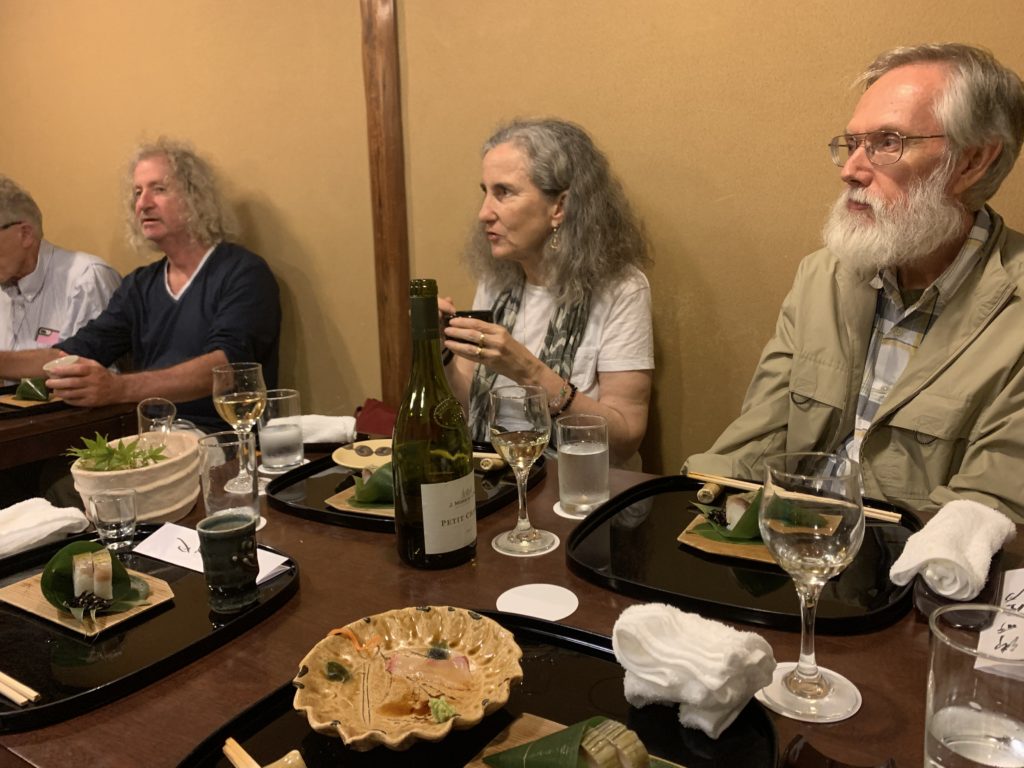
(photos by John Dougill)
Anyone doing research on Japanese culture, and on Japanese religion in particular, will be familiar with Mark Schumacher’s A-Z Photo Dictionary of Buddhism and Shinto in Japan. It’s an invaluable resource, acknowledged overseas by scholars and museums. On October 4 Writers in Kyoto was fortunate to host its creator at a dinner talk when he gave an overview of its development.
A farmer’s son from Minnesota, Mark was brought up a Catholic and took up East Asian studies at university. He spent two years in Taiwan learning Chinese, and in 1993 arrived in Japan with interests far removed from the religious life of the country.
Based in Kamakura where he still lives, he made money as a translator and web designer, creating webpages and estores well ahead of the curve, enjoying some prestigious clients including ceramics collector Robert Yellin, owner of Yakimono Gallery, and saké expert, John Gauntner (with whom he exports saké). He did work too for famed author Robert Whiting (his neighbour) and Bryan Baird, founder of Baird craft beer. Inspired by such people, Mark looked around for a passion of his own and found it in his curiosity about Buddhist statuary.
It was in Kyoto’s Sanjusangendo (Hall of 33 Bays) that he had an epiphany, when confronted with number 33 and the temple’s focus on Kannon, deity of compassion. Why 33 he wondered? One question led to another, and in his enthusiasm to track down the answers he realised he had found his calling.

Over the past twenty years he has been diligently building up his website in a true labour of love. From the beginning he was determined to illustrate the statues, making it a photo dictionary rather than just a database. He was also concerned to credit and acknowledge the sources of his information. Such was his dedication that to his surprise he found scholars contacting him for their research, and in recent years he has had dealings too with authors, art collectors and the NHK. He has even been asked to identify rare pieces for museum collections.
Remarkably after all this time, Mark’s enthusiasm has not waned and he remains as passionate as ever about his project. His latest area of interest is in New Duties for Old Deities, with postwar developments such as Mizuko Jizo and Mizuko Kannon (patrons of departed souls, especially children lost to miscarriage, stillbirth, or abortion); Bokefuji deities (worshipped to ward off dementia) and Pokkuri divinities catering to Japan’s elderly citizens, who wish to die quickly without suffering from dementia, cancer or other prolonged illness (pokkuri could be loosely translated as “to pop off quickly”).
Work on the Photo Dictionary goes on, and Shinto has now been added to the comprehensive work on Buddhism. Mark’s ebullience was infectious, and the whole group left invigorated by the fine fare on offer. A little piece of Kamakura had lit up the soul of Kyoto.
(report by John Dougill)


